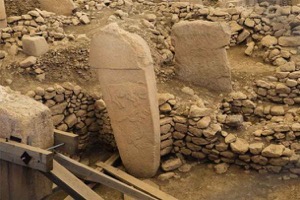I routinely look at articles discussing Apple iPhone’s “Dynamic Island”. It’s a relatively new feature on iPhones and a new feature for me as this is the first iPhone I’ve owned that incorporated it.
 Every once in a while I’ll have an app running, then switch to something else. At these times I’m made aware of the Dynamic Island because interesting information from one or more apps is displayed in the island.
Every once in a while I’ll have an app running, then switch to something else. At these times I’m made aware of the Dynamic Island because interesting information from one or more apps is displayed in the island.
Not all apps support Dynamic Island, nor do they need to. However, I’m always intrigued when an app puts something in the island.
This morning I ran across this article about the DI and had a really good laugh after my brain rebooted once or twice. The article starts getting really funny in the “Apple’s Vision for the Dynamic Island” section.
Here for your amusement is a copy of the article in case someone over at cellularnews.com wakes up and realizes the AI made up all the content.
I suppose it’s possible that cellularnews.com or the listed source thesweetsetup.com are a completely bogus site designed for nothing but pushing advertisements. Perhaps this article is satire?
Apple Reveals Its Actual Thoughts On The Dynamic Island
Written by: Blaire Lubin | Last updated on January 24, 2024
Tech Insights & Trends
Industry News
Mobile Accessories
apple-reveals-its-actual-thoughts-on-the-dynamic-island
Source: Thesweetsetup.com
When it comes to cell phones and mobile accessories, Apple has always been at the forefront of innovation and design. Their latest revelation, the Dynamic Island, is no exception. Apple’s new product promises to revolutionize the way we interact with our mobile devices. But what are Apple’s actual thoughts on the Dynamic Island? In this article, we will delve into the minds of Apple and explore their insights and vision behind this groundbreaking creation. From the design concept to the functionality, we will uncover the secrets that make the Dynamic Island a must-have accessory for every cell phone user. So, let’s dive in and discover Apple’s true perspective on the Dynamic Island.
Inside This Article
Apple’s Vision for the Dynamic Island
The Technological Innovations of the Dynamic Island
The Environmental Impact of the Dynamic Island
The Potential Challenges and Benefits of the Dynamic Island
Conclusion
FAQs
Apple’s Vision for the Dynamic Island
Apple is renowned for its groundbreaking innovations in the tech industry. From the iPhone to the Apple Watch, the company has consistently pushed the boundaries of what is possible in the world of technology. Now, Apple is turning its attention to a new frontier: the creation of a Dynamic Island.
So, what exactly is a Dynamic Island? According to Apple, it is a revolutionary concept that combines cutting-edge technology with sustainable design principles. The goal is to create an island that is not only a place to live and work but also a living ecosystem that adapts and evolves with the needs of its inhabitants.
At the core of Apple’s vision for the Dynamic Island is the integration of smart technologies. Imagine a place where buildings are seamlessly connected, and everything from lighting to transportation is controlled by an intelligent network. This would not only enhance the convenience and efficiency of daily life but also minimize waste and energy consumption.
But it doesn’t stop there. Apple’s vision also includes the utilization of renewable energy sources. Solar panels and wind turbines would be strategically incorporated into the island’s infrastructure, ensuring a sustainable and eco-friendly power supply. Additionally, advanced waste management systems would be implemented to minimize pollution and promote recycling.
One of the key aspects of the Dynamic Island is its adaptability. Apple envisions an island that can respond to the changing needs and desires of its residents. This means that buildings can be easily reconfigured or even moved to different locations, allowing for the flexible use of space. Whether it’s creating new residential areas, expanding commercial zones, or transforming public spaces, the Dynamic Island can accommodate it all.
Furthermore, Apple recognizes the importance of fostering a sense of community and connection within the Dynamic Island. The company plans to create vibrant public spaces where people can come together, collaborate, and socialize. Green parks, recreational facilities, and cultural venues will be carefully integrated into the island’s design, promoting a healthy and balanced lifestyle.
Apple’s vision for the Dynamic Island is an ambitious one, but it aligns perfectly with the company’s commitment to innovation and sustainability. By creating a smart, adaptable, and eco-friendly living environment, Apple is setting the stage for a new era of urban development.
As the company continues to explore and refine its vision, we can expect to see even more exciting developments in the near future. The Dynamic Island represents a bold step forward in the evolution of smart cities and serves as a shining example of what is possible when technology and sustainability come together.
The Technological Innovations of the Dynamic Island
The Dynamic Island is not just a groundbreaking architectural marvel – it is also a testament to the limitless possibilities of technological innovation. From its inception, Apple envisioned the Dynamic Island as a hub of technological advancements that would redefine the way we interact with our environment and each other.
One of the most notable technological features of the Dynamic Island is its smart infrastructure. Powered by advanced IoT (Internet of Things) technology, the entire island is interconnected. Every building, streetlight, and vehicle is equipped with sensors and actuators, creating a network that constantly collects and analyzes data to optimize efficiency and enhance the island’s functionality.
Artificial intelligence (AI) plays a crucial role in the operations of the Dynamic Island. The AI-powered virtual assistants, embedded in every corner of the island, act as personal concierges, providing real-time information and personalized services to residents and visitors. Whether it’s finding the best route to a destination or recommending local attractions, the virtual assistants are there to make every experience on the island seamless and convenient.
The Dynamic Island is also a pioneer in renewable energy solutions. It harnesses solar panels and wind turbines strategically placed throughout the island to generate clean and sustainable energy. The advanced energy management system intelligently monitors and optimizes the distribution of this renewable energy, minimizing wastage and reducing the island’s carbon footprint.
Another technological breakthrough on the Dynamic Island is its integration of augmented reality (AR) and virtual reality (VR) experiences. Visitors can immerse themselves in interactive virtual worlds or enhance their real-world encounters with digital overlays, giving rise to a new dimension of entertainment, education, and communication.
The transportation system on the Dynamic Island is perhaps one of its most awe-inspiring innovations. A network of autonomous vehicles, powered by electric engines, seamlessly navigates the island, offering efficient and eco-friendly transportation options. These cutting-edge vehicles communicate with the island’s smart infrastructure, ensuring a smooth and synchronized flow of traffic throughout the island.
The technological innovations on the Dynamic Island are not limited to buildings and infrastructure. The island provides its residents with seamless connectivity through advanced 5G networks, enabling high-speed internet access and facilitating the integration of smart devices into everyday life.
Overall, the Dynamic Island serves as a testament to Apple’s commitment to technological innovation and sustainable living. Its smart infrastructure, AI integration, renewable energy solutions, AR/VR experiences, autonomous transportation, and connectivity advancements make it a remarkable model for future cities and a true testament to the power of technology.
The Environmental Impact of the Dynamic Island
The Dynamic Island, with its advanced technological features and cutting-edge design, offers a plethora of benefits to users. However, it is essential to consider the environmental impact that this innovative creation may have. While the island is designed to be sustainable and eco-friendly, there are still important factors to consider.
1. Energy Consumption: The Dynamic Island utilizes various technologies that require a substantial amount of energy to function optimally. From its advanced lighting systems to its interactive screens, energy consumption is a significant consideration. Efforts must be made to ensure that the island’s energy needs are met using renewable sources, such as solar or wind power, to minimize its carbon footprint.
2. E-Waste Management: With the rapid advancement of technology, electronic waste (e-waste) has become a significant concern worldwide. The Dynamic Island, with its intricate components and sophisticated features, may also contribute to the e-waste stream. It is crucial for the creators of the island to implement effective recycling programs and promote responsible disposal of old or damaged components.
3. Environmental Preservation: The construction and maintenance of the Dynamic Island must take into account the impact on the surrounding environment. Special consideration should be given to the preservation of natural habitats, reduction of noise pollution, and protection of flora and fauna in the area. Additionally, sustainable materials and practices should be implemented during the construction process to minimize the ecological footprint.
4. Water Usage: The Dynamic Island incorporates various water features to enhance its appeal and functionality. However, the efficient use of water resources is paramount. Technologies such as water recycling systems and automated irrigation should be employed to ensure water conservation and minimize wastage.
5. Long-Term Sustainability: The environmental impact of the Dynamic Island should not only be considered during its construction phase but also its long-term sustainability. Regular monitoring and evaluation should be conducted to identify areas for improvement and ensure continuous adherence to eco-friendly practices.
The Potential Challenges and Benefits of the Dynamic Island
As exciting as the concept of the Dynamic Island may be, it is essential to consider both the potential challenges and benefits that accompany such a technological innovation. Let’s explore some of the key factors that could impact the success and implementation of this revolutionary idea.
Challenges
1. Infrastructure: Building a Dynamic Island from scratch would require a significant investment in infrastructure. The construction of this virtual paradise would involve the deployment of a vast network of sensors, communication systems, and power sources, presenting logistical challenges and costs.
2. Privacy and Security Concerns: With the integration of numerous sensors and IoT devices, privacy and security become critical concerns. Ensuring that personal data remains confidential and protected from cyber threats would require robust measures and protocols to safeguard user information.
3. Ethical Considerations: The Dynamic Island raises ethical questions surrounding the impact on wildlife and the environment. Constructing a virtual paradise could disrupt ecosystems and wildlife habitats, necessitating careful planning and mitigation strategies to minimize any negative effects on the natural world.
4. Social Inclusion: The implementation of the Dynamic Island shouldn’t exacerbate existing social inequalities. It is crucial to ensure equal access to the island’s benefits and opportunities, avoiding the creation of a digital divide between different socio-economic groups.
Benefits
1. Innovative Integration: The Dynamic Island offers the potential for seamless integration of various smart technologies. From smart homes to autonomous transportation systems, this interconnected environment could revolutionize the way we live, work, and interact with our surroundings.
2. Enhanced Sustainability: With a focus on green technologies and renewable energy sources, the Dynamic Island could serve as a model for sustainability. By implementing eco-friendly solutions and practices, such as efficient waste management and renewable energy generation, the island could significantly reduce its ecological footprint.
3. Improved Quality of Life: The Dynamic Island would aim to enhance the overall quality of life for its residents. Smart healthcare systems, advanced AI-assisted services, and seamless connectivity would contribute to convenience, efficiency, and overall well-being.
4. Economic Opportunities: The implementation of the Dynamic Island would generate a wide array of economic opportunities. The construction, maintenance, and management of the infrastructure would lead to job creation, technological innovation, and sector growth, stimulating the local economy.
Conclusion
As we conclude our exploration of Apple’s thoughts on the Dynamic Island, it becomes evident that the tech giant recognizes the potential of this innovative concept. With its emphasis on modular and customizable mobile accessories, the Dynamic Island opens up a whole new world of possibilities for smartphone users. Apple’s enthusiasm for this idea is reflected in their commitment to research and development, as well as their collaboration with accessory manufacturers.
By embracing the Dynamic Island, Apple is not only catering to the evolving needs and preferences of their customers but also setting a new standard for mobile accessories in the industry. The integration of advanced technologies, sustainability-driven design, and seamless user experience is set to redefine how we interact with our smartphones.
As we eagerly await the release of Apple’s Dynamic Island, it’s clear that this groundbreaking concept will revolutionize the way we use and accessorize our mobile devices. The possibilities are endless, and the future of mobile accessories looks brighter than ever.
FAQs
1. What are mobile accessories?
Mobile accessories refer to supplementary devices or products that are used to enhance the functionality, aesthetics, or protection of mobile phones. These accessories can include items such as cases, screen protectors, chargers, headphones, power banks, and more.
2. Why should I invest in mobile accessories?
Investing in mobile accessories can greatly enhance your overall mobile experience. Accessories like cases and screen protectors offer protection against physical damage and scratches, while chargers and power banks ensure you never run out of battery power. Headphones and Bluetooth speakers improve audio quality, and mobile stands or mounts provide convenience for hands-free usage.
3. Are all mobile accessories compatible with all phone models?
No, not all mobile accessories are compatible with every phone model. Manufacturers create accessories specifically designed for certain phone models, taking into consideration factors like measurements, ports, and features. Therefore, it is essential to choose accessories that are compatible with your specific phone model to ensure a proper fit and functionality.
4. How do I choose the right mobile accessories?
Choosing the right mobile accessories depends on your individual needs and preferences. Consider factors such as the type of protection you require, the desired functionalities, and the overall aesthetics that align with your personal style. Additionally, make sure to check compatibility with your phone model and read reviews or seek recommendations to ensure the quality and reliability of the accessories.
5. Are there any tips for maintaining and cleaning mobile accessories?
Yes, there are a few tips for maintaining and cleaning mobile accessories. For cases and screen protectors, wiping them with a soft cloth and mild cleaning solution can help remove dirt and smudges. To clean headphones or earbuds, gently wipe the exterior with a damp cloth and use a small brush to remove any debris from the speaker grilles. Always refer to the manufacturer’s instructions for specific cleaning recommendations and avoid using harsh chemicals or abrasive materials that could damage the accessories.

 China has created a COVID variant that is more deadly than the previous version. 20X more deadly supposedly. I suppose that means it’s only likely to kill humans 4% of the time or some such. What none of the fear mongering articles answer is does previous COVID-19 exposure and recovery, confer immunity to this particular variant.
China has created a COVID variant that is more deadly than the previous version. 20X more deadly supposedly. I suppose that means it’s only likely to kill humans 4% of the time or some such. What none of the fear mongering articles answer is does previous COVID-19 exposure and recovery, confer immunity to this particular variant. Ya know folks… We’ve seen this movie before.
Ya know folks… We’ve seen this movie before. In other words folks, we’ve known for almost 100 years that biological weapons were a SUPER BAD Idea. Yet, the Chinese military and other militaries around the world are still fucking around with them.
In other words folks, we’ve known for almost 100 years that biological weapons were a SUPER BAD Idea. Yet, the Chinese military and other militaries around the world are still fucking around with them.  Not that the UN has any power other than the power to insult or demean Western countries specifically the United States over past transgressions, while member countries castigating the West, are currently engaging in those same activities. Slavery, paging Slavery, Women’s rights, paging Women’s rights. Border enforcement, paging border enforcement…
Not that the UN has any power other than the power to insult or demean Western countries specifically the United States over past transgressions, while member countries castigating the West, are currently engaging in those same activities. Slavery, paging Slavery, Women’s rights, paging Women’s rights. Border enforcement, paging border enforcement… The United Nations, like the World Health Organization, is pretty much owned by China. Neither of these organizations are any more interested in the well being of The West, specifically the United States, than Ghingis Khan would be (or the World Economic Forum is). The sooner we understand and accept this simple fact the better off we’ll all be.
The United Nations, like the World Health Organization, is pretty much owned by China. Neither of these organizations are any more interested in the well being of The West, specifically the United States, than Ghingis Khan would be (or the World Economic Forum is). The sooner we understand and accept this simple fact the better off we’ll all be. Now
Now  We’ve all gotten used to security checkpoints at airports, we’d think nothing of stepping into or through a “Scanner” would we?
We’ve all gotten used to security checkpoints at airports, we’d think nothing of stepping into or through a “Scanner” would we? Isn’t that how mass murderers and genocidal maniacs justify their actions?
Isn’t that how mass murderers and genocidal maniacs justify their actions? In that moment while I was grinding my teeth listening to a bunch of choices that I didn’t want, and having the system telling me, “I didn’t understand what you’re asking for, so let’s try again…”
In that moment while I was grinding my teeth listening to a bunch of choices that I didn’t want, and having the system telling me, “I didn’t understand what you’re asking for, so let’s try again…” That’s why a lot of people are disconnecting their cable feeds and going back to antennas or just the internet.
That’s why a lot of people are disconnecting their cable feeds and going back to antennas or just the internet. They’ve been able to maintain their denial because there was no evidence of other civilizations from 10-12 thousand years ago.
They’ve been able to maintain their denial because there was no evidence of other civilizations from 10-12 thousand years ago.